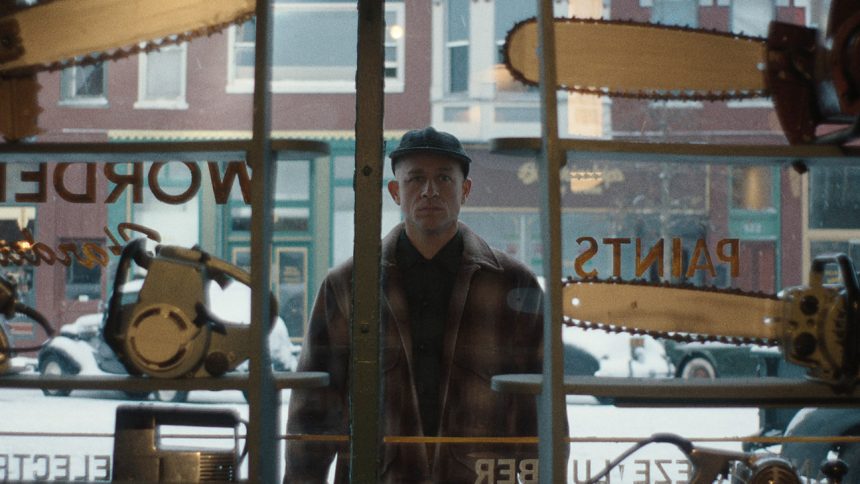‘Monster: The Ed Gein Story’ Review: Charlie Hunnam Dons Frilly Undergarments and Flesh Masks for Netflix’s Trashy Takedown of True Crime and Those Who Love It
It has already been announced that the next installment in Ryan Murphy and Ian Brennan‘s Monster franchise will focus on Lizzie Borden, following in the bloody footsteps of Jeffrey Dahmer and the Menendez brothers.
After marathoning eight episodes of Netflix’s Monster: The Ed Gein Story, the franchise’s first entry to be created and written entirely by Brennan, I’ll offer an intriguing alternative: Don’t.
Monster: The Ed Gein Story is awful, but its awfulness at least arises out of some level of thoroughly disjointed ambition. By the last two episodes, interminable dirges that had me yelling, “Why wouldn’t you just END?” at my television, Monster: The Ed Gein Story had offered something of a Grand Unified Theory of Serial Killers, with a thesis that posits Ed Gein as the ur-narrative at the heart of all serial killer chronicles, real and fictional.
The irony, according to Brennan, is that Gein, for all the times his story has been told and revised, was apparently just a meek, lovable, impressively buff man with one specified mental illness, several unspecified disabilities, some well-earned Mommy issues and a few unfortunate, but generally victimless, hobbies. The true monsters are the people inspired by Ed Gein, the future serial killers walking in his shadow, the storytellers who borrowed aspects of his life without insight or attribution and, worst of all, the people entertained by recountings of Gein’s life.
You Might Also Like
It’s a teetering narrative tower of ghouls built upon worse ghouls, in which the only people who aren’t ghouls are Gein and Brennan and Murphy — the latter two of whom have once again made a serial killer story about the ghoulishness of serial killer stories, with neither the interest nor the ability to reckon with how much their own careers have been built on one serial killer story after another.
I would say that it’s beyond my ability to comprehend how Brennan could have written the last two episodes of Monster: The Ed Gein Story and come away feeling like there was anything left for him to say in this genre — except that a key theme here is that everybody else who has ever told a serial killer story is doing it wrong and the Monster franchise is the only bastion of clear-eyed truth. They need to tell these stories because if they don’t, viewers will sate their appetites with “lesser” versions. The Monster franchise looks at itself as a public service.
Everybody is guilty and hypocritical and mendacious except for the producers of Monster and Netflix itself, a streamer that continues to happily churn out cut-rate serial killer docuseries and the Monster franchise that tell the audiences who devour these series that they’re grotesque. Netflix doesn’t even care about this internal contradiction or internecine rivalry, since in addition to Psycho, The Texas Chainsaw Massacre and The Silence of the Lambs, one of the “lesser” semi-fictionalizations that Monster: The Ed Gein Story exploitatively calls to task for being exploitative is Netflix’s very own Mindhunter.
Continuing the franchise’s defining of monsters as “Hunky white dudes who killed people and mostly lived in Wisconsin,” The Ed Gein Story begins in 1944 with our introduction to Ed (Charlie Hunnam), who enjoys masturbating in his mother’s (Laurie Metcalf) underwear, working around the family farm and scaring the girls down at the local pharmacy with his drowsy, lilting, intellectually hesitant voice. In that order.
The only person who understands Ed is Adeline Watkins (Suzanna Son), a woman of indeterminate age who is obsessed with the New York crime photographer known as Weegee and introduces Ed to concentration camp pictures, as well as pulp true crime magazines about Ilse Koch (Vicky Krieps), the notorious Nazi war criminal known as the Bitch of Buchenwald. That these pulp true crime magazines inflame Ed’s deviant desires allows Brennan to make facile accusations about the impact of true crime on susceptible fans and suggest that the series’ inaccurate and fetishistic recreations of Nazi atrocities are based on inaccurate and fetishistic pulp magazines rather than shoddy research.
I’ve been uncomfortable every time a Ryan Murphy production has attempted to integrate the Holocaust dating back to American Horror Story: Asylum and it would be my preference that this be a well he not return to. The Ed Gein Story makes the argument that just as Gein was motivated by the recent past, writers telling Gein’s story have used it to address the actual nightmares of the historical moment. That’s fair. What’s perplexing is that while we get a laundry list of the Vietnam barbarities that inspired Tobe Hooper (Will Brill) to spin Gein into Leatherface, Brennan and company don’t recreate the My Lai Massacre — but emaciated prisoners in striped uniforms are entirely fair play.
Anyway, back to 1944 and Ed Gein. Bad stuff happens to Ed’s brother, and then to his mother, and while Hudson Oz’s Henry doesn’t return, death can’t keep Metcalf’s Augusta down (in ways that will be familiar to anybody who has seen Psycho). As Ed becomes more and more curious about grave robbery and the decorative potential of human flesh, we jump forward a bunch of years to Alfred Hitchcock (Tom Hollander, joining Toby Jones in the Hitchcock/Capote club) ignoring wife Alma’s (Olivia Williams) disapproval to adapt Gein’s story, and Anthony Perkins (Joey Pollari) ignoring his misgivings and neuroses tied to his repressed homosexuality to star.
Hitchcock and Perkins are one-dimensionally depicted, which is one more dimension than Alma receives. The Texas Chainsaw Massacre scenes, intercut with Gein’s deeper descent into corpse abuse and violence, have even less depth. And then there’s The Silence of the Lambs, from which we get a recreation of the Buffalo Bill tucking-and-dancing scene. This would seem to perpetuate outmoded stereotypes about trans sociopathy, except that the series uses Christine Jorgensen (Alanna Darby) to flat-out declare that Ed Gein was not trans — which is fine and well except for how many viewers will have checked out entirely by the time that scene appears. Anyway, the Silence of the Lambs scene doesn’t even mention Jonathan Demme’s name or explore any historical reason that this was the Gein permutation that Demme and Thomas Harris were attracted to.
The Ed Gein Story jumps around in time, in part to make connections to the other adaptations and in part because the biographical chronology is so mangled that any distraction is welcome. There are aspects of truth to most of it, though it’s closer to “truth” when it comes to anything related to Adeline or babysitter Evelyn Hartley (Addison Rae), who may or may not have been killed by Gein and definitely doesn’t matter as much as other people in the series. They’re using the real name of a person who disappeared, but they’ve embellished it into a subplot best described as “Ed Gein Joins The Baby-Sitters Club.”
No momentum builds anywhere, because whatever intellectual points Brennan and Max Winkler, director of six episodes, want to make, the series would still rather dedicate unfathomable amounts of time to Ed Gein removing the underwear from corpses over and over again; Ed Gein masturbating over and over again; Ed Gein dancing around with a chainsaw over and over again; and blaming viewers and other storytellers for getting off on the prurient aspects of Ed Gein’s life.
The Ed Gein Story doesn’t want to leave anything to the imagination, but also wants to criticize viewers for fixating on and becoming increasingly desensitized to monstrosities. You may find yourself asking the show, “Have you considered maybe mentioning a jar with eight dried and one not-so-dried vulvas rather than showing us flayed vulvas multiple times?” No, the series has not. And you know why? Because viewers demand these things. We’re the monsters and Monster is doing those monsters a service and mocking them for it.
Narrative chaos and thematic hypocrisies aside, Monster: The Ed Gein Story has some of the same attributes as its predecessors, though it has no single episodes as good as “The Hurt Man” or “Silenced.” It barely has episodes.
It does, however, have acting in all-caps and bold-type.
If you can get past the reality that Charlie Hunnam‘s Ed Gein and Glen Powell’s performance-within-a-performance as the title character in Chad Powers are identical, the star is terrifyingly committed to Gein’s haunted, wandering eyes, his haunted, wandering voice and his haunted, totally ripped abs.
Metcalf wails and shrieks about wanton harlots and whatnot, Krieps plays Ilse Koch mostly in outsized Bitch of Buchenwald fashion and Lesley Manville, playing a hardware store owner, fights to retain dignity while delivering dialogue like “If you pump me good, Eddie Gein, I’ll let you wear my panties.” And while she fails, damned if she doesn’t try hard.
Son gives the only performance I’d describe as subtle, leaving you constantly guessing as to what Adeline is thinking or, at times, if she exists at all. The thing I can’t figure out is if Son is nailing an enigmatic character or if she’s doing her best with a poorly imagined version of a woman who existed, but very much not the way she’s presented here. If you want to make a real person feel like a composite, maybe just go with a composite and don’t use the name of a real person?
It’s all handsomely photographed, both in the naturalistic approach to the icy farm country of Wisconsin and the attempts to mimic Texas Chainsaw and Silence of the Lambs, and Mac Quayle’s score, sometimes echoing Bernard Herrmann, is great.
Ultimately, the gist of the Monster franchise is that Murphy and Brennan are holding a mirror up to America and all they can think to say is, “Stop hitting yourself.” We’re three seasons into this experiment and there’s no evidence that they accept any complicity at all, choosing only to critique other people doing the same things. And even those other people, the Hitchcocks and Demmes and Hoopers and Finchers, can at least take solace in the Oscars and critical acclaim and box office. As for ordinary people who consume the stuff, at best we’re depicted as gossiping yokels, the reason the pulp true crime magazines exist, the easily susceptible rubes turning killers into heroes, the economically disadvantaged citizenry who pay 50 cents to tour the Gein house and point gleefully at the bloodstains on the floor.
I can’t emphasize how much contempt this series has for its audience. Enjoy.







